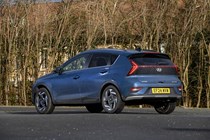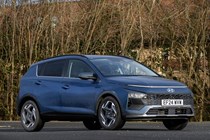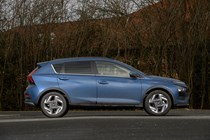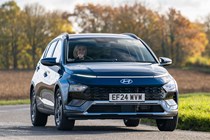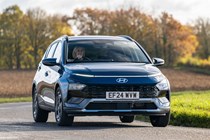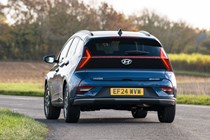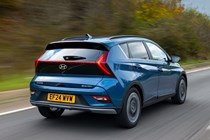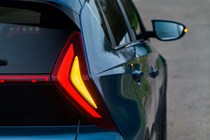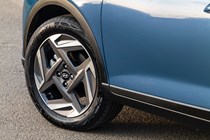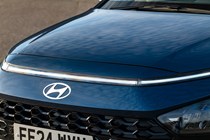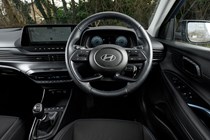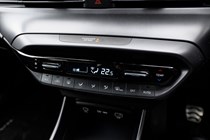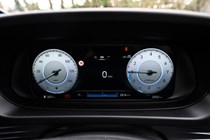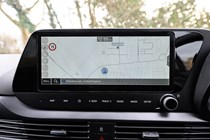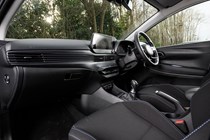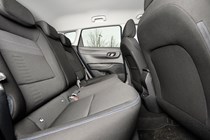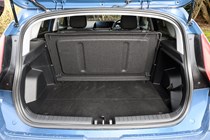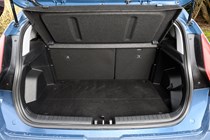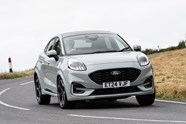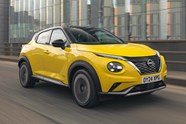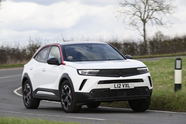
Hyundai Bayon review
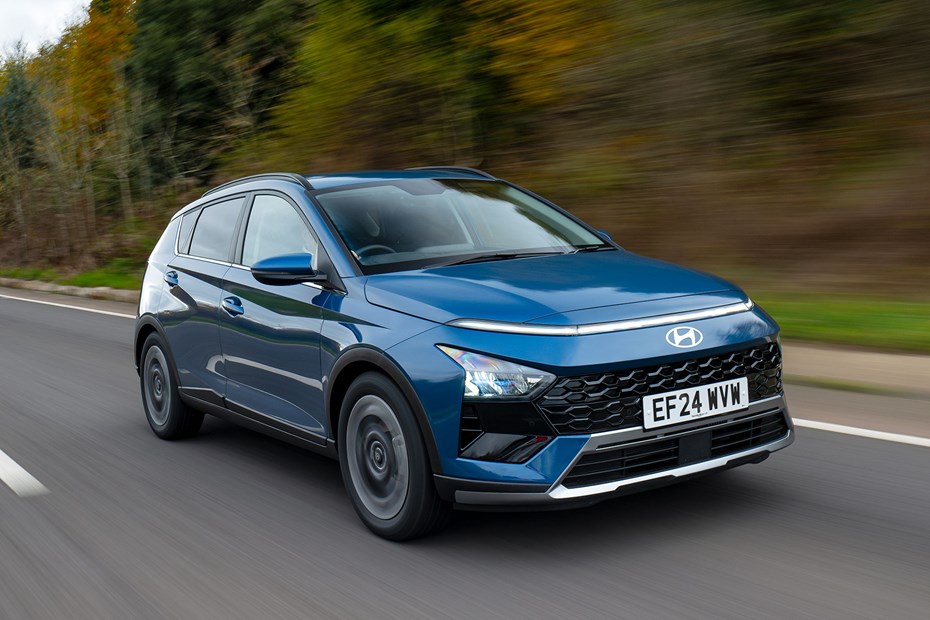
At a glance
| Price new | £23,125 - £27,175 |
|---|---|
| Used prices | £9,803 - £20,384 |
| Road tax cost | £195 |
| Insurance group | 13 - 18 |
Get an insurance quote with

|
|
| Fuel economy | 50.4 - 53.3 mpg |
| Miles per pound | 7.4 - 7.8 |
| Number of doors | 5 |
| View full specs for a specific version | |
Available fuel types
Petrol
Pros & cons
- Comfortable ride
- Spacious interior
- Good value for money
- Limited choice of engines
- Boot is nothing special
- Awful clutch pedal
Hyundai Bayon SUV rivals
Overview
The Hyundai Bayon is a classic niche-filling exercise. Hyundai needed a small SUV to rival the incredibly popular Ford Puma – and, like Ford, it had a reliable set of mechanicals from its supermini on which to build one.
So, Hyundai followed in Ford’s footsteps and built an SUV on the same underpinnings as the i20. Like the Puma, it shares its engines and gearboxes with its donor car, but it’s bigger in every direction than the supermini on which it’s based.
We like the i20 – so this should be great. But the Bayon has some incredibly appealing rivals, such as the Renault Captur, Skoda Kamiq and the larger but cheaper Dacia Duster. So, are its funky styling and spacious cabin good enough to make you want one?
To try and convince you, Hyundai facelifted the Bayon in 2024. Sadly, the car lost its mild hybrid powertrains in the process, but it gained a redesigned front end that shares the same sort of full-width light bar as the larger Hyundai Kona Electric.
And even though it isn’t quite as efficient as it was, the simplified range has made the Bayon an even easier car to buy. Now, it’s only available with one engine, two gearboxes and three trim levels. The engine is a 100hp 1.0-litre three-cylinder petrol, the gearboxes are either a six-speed manual gearbox or a seven-speed automatic and the trims are called Advance, Premium and Ultimate.
The Advance trim comes as standard with manual 16-inch alloy wheels, LED headlights, rear parking sensors, air conditioning, a rear-view camera and a 10.25-inch infotainment system with wired Apple CarPlay and Android Auto.
Premium models build on this specification with 17-inch alloy wheels, climate control, front parking sensors, automatic windscreen wipers, a heated steering wheel, heated front seats, an auto-dimming rear-view mirror and a USB-C port for the rear (which most modern parents will tell you is handy for keeping kids entertained on long trips).
The range-topping Ultimate model gets all the kit Hyundai could cram into the space. That includes a Bose stereo, keyless go, a wireless smartphone charger and a sunroof.
Prices start from £22,905 for the Advance, £24,305 for the Premium and £25,705 for the Ultimate. For reference, the Puma starts from £26,350, although it’s worth noting the Ford has mild hybrid assistance as standard (which is something you can no longer have on the Bayon).
Over the next few pages, we’ll review each aspect of the Hyundai Bayon, exploring its practicality, interior quality, technology, driving experience and running costs before offering our final verdict. If you’d like to learn more about how we reached our verdict on the Bayon, check out our how we test cars explainer page.



